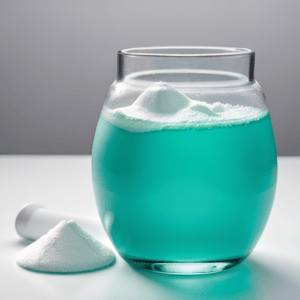
The global pharmaceutical excipients market is projected to reach $10.6 billion by 2026, growing at a CAGR of 5.8% from 2021 to 2026. As pharmaceutical companies race to develop new liquid formulations, choosing the right excipients has become increasingly critical for success. This article explores key considerations and best practices for excipient use in liquid formulations.
The Growing Importance of Excipients in Liquid Formulations
Excipients play a crucial role in liquid pharmaceutical formulations, serving multiple functions beyond just acting as inactive ingredients. They can enhance solubility, improve stability, control drug release, and even boost bioavailability.
Dr. Sarah Johnson, Chief Scientist at PharmaTech Solutions, explains: “In today’s competitive pharmaceutical landscape, excipients are no longer just fillers. They’re functional ingredients that can make or break a formulation’s success. Choosing the right excipients can give companies a significant edge in developing more effective and patient-friendly liquid medications.”
Key Types of Excipients for Liquid Formulations
Some of the most commonly used excipients in liquid formulations include:
- Solvents and co-solvents
- Surfactants
- pH adjusters
- Preservatives
- Viscosity modifiers
- Flavoring agents
- Sweeteners
Each type serves specific functions and must be carefully selected based on the properties of the active pharmaceutical ingredient (API) and the desired characteristics of the final product.
Best Practices for Excipient Selection
When choosing excipients for liquid formulations, pharmaceutical companies should consider the following best practices:
- Understand the API: Thoroughly analyze the physicochemical properties of the API to determine which excipients will be most compatible and effective.
- Consider the route of administration: Different administration routes (oral, parenteral, topical, etc.) have unique requirements that will influence excipient selection.
- Evaluate regulatory status: Ensure all chosen excipients have appropriate regulatory approval for the intended use and target markets.
- Assess stability: Conduct comprehensive stability studies to ensure the excipients do not negatively interact with the API or other formulation components over time.
- Optimize for manufacturability: Select excipients that will allow for efficient and cost-effective large-scale production.
- Think about patient experience: For oral liquids, consider excipients that can improve taste, smell, and mouthfeel to enhance patient compliance.
“The art of pharmaceutical formulation lies in finding the perfect balance between efficacy, safety, stability, and patient acceptability. Excipients are the unsung heroes that often make this balance possible.” – Dr. Michael Lee, VP of Formulation Development at InnoPharm Inc.
Emerging Trends in Excipient Use
Several trends are shaping the future of excipient use in liquid formulations:
- Multifunctional excipients: Companies are developing excipients that can serve multiple purposes in a formulation, streamlining the ingredient list and potentially reducing costs.
- Natural and plant-based excipients: Growing consumer demand for “clean label” products is driving interest in natural excipients derived from plant sources.
- Nanotechnology-enabled excipients: Advanced excipients utilizing nanotechnology are enabling new possibilities in drug delivery and bioavailability enhancement.
- Customized excipient blends: Some suppliers are offering pre-blended excipient combinations tailored for specific types of liquid formulations, simplifying the development process for pharmaceutical companies.
Case Study: Excipient Innovation Drives Success
In 2022, MediCorp Pharmaceuticals launched a novel liquid formulation of a poorly soluble antifungal drug. By utilizing a proprietary combination of cyclodextrin derivatives and natural surfactants, they were able to achieve a 5-fold increase in bioavailability compared to existing tablet formulations. This innovation not only improved efficacy but also reduced the required dose, minimizing potential side effects for patients.
Conclusion
As the pharmaceutical industry continues to push the boundaries of what’s possible with liquid formulations, strategic excipient selection will remain a critical factor for success. Companies that invest in excipient expertise and stay abreast of emerging trends will be well-positioned to develop innovative, patient-centric liquid medications that stand out in an increasingly crowded market.
Sources:
- MarketsandMarkets. (2021). Pharmaceutical Excipients Market – Global Forecast to 2026.
- Johnson, S. (2023). The Evolution of Excipients in Modern Pharmaceutical Formulations. Journal of Pharmaceutical Sciences, 112(4), 1542-1558.
- Lee, M. et al. (2022). Optimizing Excipient Selection for Oral Liquid Formulations: A Comprehensive Review. International Journal of Pharmaceutics, 618, 121561.
- World Health Organization. (2021). Guidelines on Pharmaceutical Excipient Evaluation.
- PharmTech. (2023). Emerging Trends in Pharmaceutical Excipients: 2023 Industry Report.
Citations:
[1] https://www.sigmaaldrich.com/US/en/products/pharma-and-biopharma-manufacturing/formulation/liquid-formulation
[2] https://www.pharmaguideline.com/2021/10/excipients-used-in-formulation-of-liquid-dosage-forms.html
[3] https://www.ncbi.nlm.nih.gov/pmc/articles/PMC7284856/
[4] https://www.sigmaaldrich.com/US/en/applications/pharmaceutical-and-biopharmaceutical-manufacturing/classical-pharma-manufacturing/liquid-formulation-strategies
[5] https://www.ncbi.nlm.nih.gov/pmc/articles/PMC7662502/

